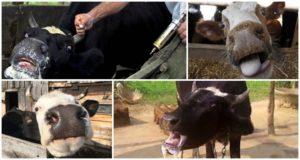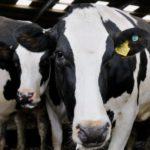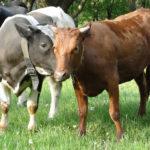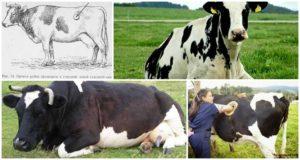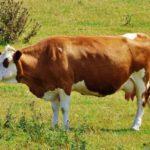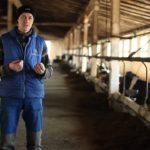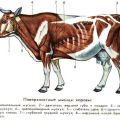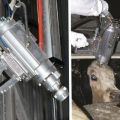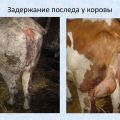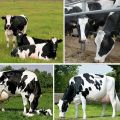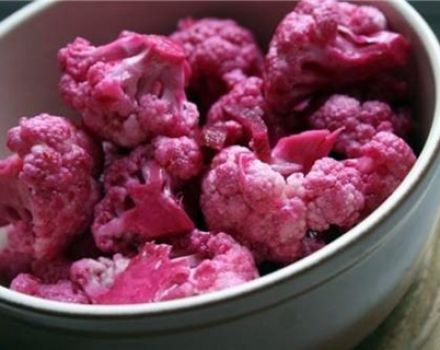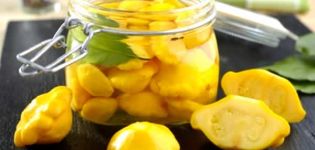Symptoms of traumatic pericarditis and why it occurs, cattle treatment
Purulent inflammation of the pericardium (pericardial sac) due to the injury is quite often observed in cows and other representatives of cattle. The pathological process entails serious consequences for the life and health of the animal, including death. The situation is aggravated by the fact that there is little or no benefit from treatment. Therefore, special attention should be paid to the prevention of traumatic pericarditis.
What is the disease?
This disease is a complex inflammatory process that covers the pericardial sac and nearby tissues. The provoking factor is the trauma received by the animal in contact with foreign objects. They most often enter the cow's body together with feed. The pericardium is a cavity that surrounds the heart and serves as a protective barrier against infection and inflammation.
Sharp edges of objects damage the walls of the stomach and penetrate through it into the blood. They move along the vessels to the heart and other organs, also causing injuries to them (the liver and lungs may suffer). However, the ultimate goal is always the heart, as the blood moves towards it. The resulting wound serves as a gateway for the penetration of infection, as a result of which inflammatory processes begin in the tissues.
The heart muscle contracts and pushes the foreign body even deeper, thereby damaging the middle and outer shell of the organ. Since when the object moves, the vessels are injured, a large amount of blood accumulates between the pericardium and the heart. The pressure on the organ increases, which causes it to stop and the animal dies.
Inflammation provokes hemorrhage, edema, as a result of which the heart bag is filled with exudate. The volume of liquid can reach 30-40 liters. The nature of the discharge is as follows:
- purulent;
- serous;
- hemorrhagic;
- serous fibrous.
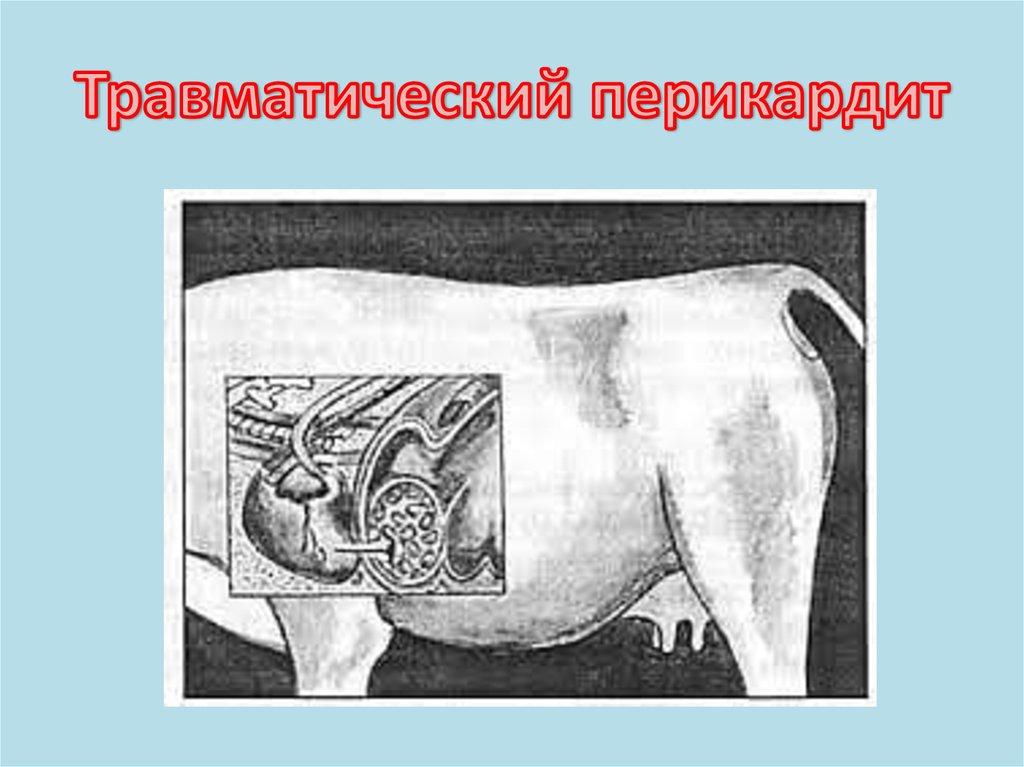
The consequence of these processes is a slowdown in blood flow, compression of the lungs, malfunctioning of the heart, irritation of nerve fibers (the cow is in pain), an increase in the body temperature of the animal. When the serous-fibrous fluid is released and enters the pericardium, fibrin remains on the walls of the pericardium and the outer shell of the heart, forming layers of layers.
Why does the disease occur
Factors contributing to the development of the disease are as follows:
- Injury to the pericardium by a foreign body with sharp edges.Such an object may be a needle, wire, nail. The animal swallows them along with food when grazing on contaminated pastures.
- The ingress of a foreign body from the outside through a wound that the animal could have received during a clash with relatives.
- Damage to the sternum. As a result of its deformation, the ribs can break and injure the pericardial sac and nearby tissues with a sharp edge.
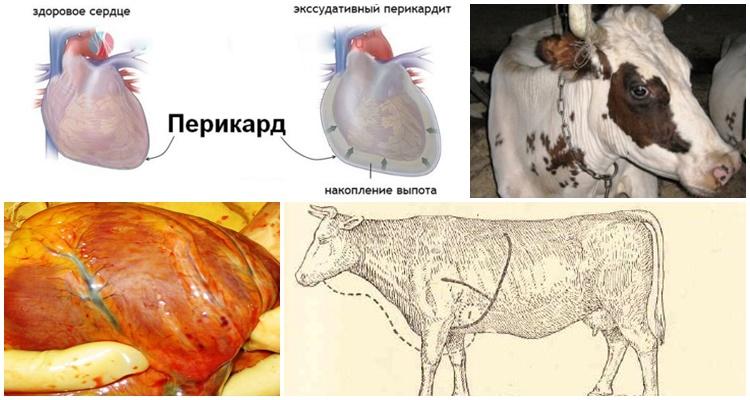
In each case, the cow's condition is aggravated by concomitant factors, namely: intra-abdominal pressure increases under the influence of such processes:
- childbirth;
- great physical activity;
- powerful blow to the abdominal cavity;
- overeating;
- falling belly down.
Signs and symptoms
Symptoms differ depending on the form of the disease:
- sharp;
- subacute;
- chronic.
In addition, the course of pericarditis is divided into two phases:
- dry (the initial stage in which there is no discharge);
- effusion (purulent discharge is formed).
Acute dry pericarditis is characterized by the following symptoms:
- Cardiopalmus.
- Strengthening the work of the heart (tremors become more powerful).
- Murmur in the heart. Reminds of crackling, scratching, friction. Its source is the pericardium, the inflamed leaves of which touch each other during contractions. With a strongly pronounced course of the disease, this symptom can be detected by palpation of the chest.
At this stage, severe pain is observed. The animal's activity decreases as the cow tries not to make sudden movements.
To reduce pressure on the heart, she arches her back as much as possible and spreads her legs wide.
Over time, the pathology passes into the effusion stage, which is characterized by:
- the sound of friction is replaced by a splash (this means that the pericardial sac is filled with fluid - pus and other secretions);
- the heartbeat becomes even more frequent, but the sound of the beats becomes muffled;
- the animal stops feeling pain;
- the leaves no longer rub against each other - now they are separated by liquid.
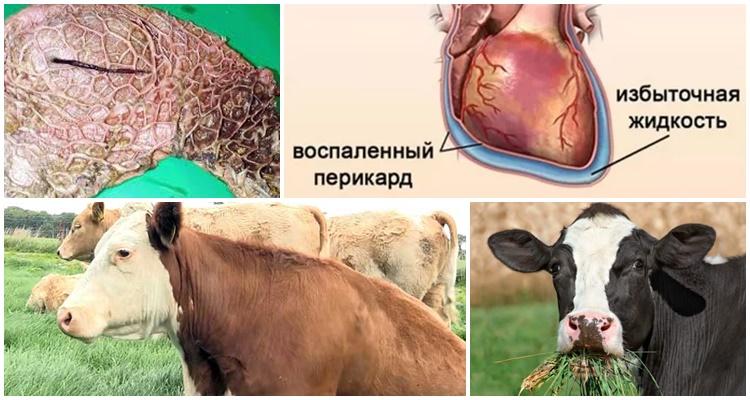
The further course of the disease in a cow leads to the following consequences:
- exudate continues to accumulate;
- pressure on the heart increases, which prevents the expansion of the organ - blood does not fill the ventricles, stagnation occurs, blood circulation is disturbed.
At this stage, the animal has symptoms:
- Lowering blood pressure.
- Dyspnea.
- Enlargement of the liver.
- Heart palpitations become constant.
- Bronchitis is possible.
- Feeling of pain, due to which the cow moves very carefully, with difficulty lying down and getting up (in this case, the chest rises first, and then the rest of the body).
- Decreased or lack of appetite in the animal.
- Decrease in milk yield.
- During the movements, the cow makes a groan.
- Swelling of the neck, chest area.
- The cow feels pain on palpation of the sternum.
Diagnostics
Traumatic pericarditis in a cow is diagnosed by a veterinarian based on:
- listening to the heart (presence of murmurs, tachycardia, increased tremors);
- palpation (the cow is in pain at this moment);
- external signs of the disease (edema, change in the behavior of the animal);
- X-ray (shows an increase in the organ, its immobility);
- puncture (in difficult cases) - done on the left side in the fourth intercostal space;
- laboratory tests (leukocytosis, lymphopenia, eosinopenia).
It is important to distinguish traumatic pericarditis in a cow from pleurisy, dropsy, myocarditis, endocarditis. Dropsy in an animal is painless, with pleurisy, noises coincide with breathing. Myocarditis and endocarditis are characterized by specific symptoms.

Treatment rules for traumatic bovine pericarditis
Treatment of this disease does not give a positive effect, so the animal is sent to slaughter.However, in some cases, it is still possible to achieve some results. Therapy involves the following:
- The animal is provided with complete rest.
- Transfer to dietary feed (grass, hay, liquid bran mixtures).
- If they refuse to eat, the cow is force-fed through artificial feeding.
Treatment is carried out in three areas:
- exudate removal;
- removal of sepsis;
- restoration of the heart.
The specific actions of the veterinarian are as follows:
- An ice bag is applied to the sternum of the animal and fixed.
- Glucose is injected into a vein (the use of drugs that normalize the work of the heart is undesirable, since they worsen the condition of the body).
- Apply "Sulfanilamide" and other antibiotics (against sepsis), as well as diuretics (to remove exudate from the animal's body).
- Sodium salicylate is injected subcutaneously.
- At the end of the course of treatment, the cow is closely monitored. If the disease returns, the animal is discarded. Surgery is sometimes used to remove a foreign body from the cow.
Prevention
Basic preventive measures include the following:
- Checking animal feed for metal foreign objects using magnets (food is passed through special installations).
- Instead of tying the pieces of the torn leash with wire, you need to get a new one.
- The hay is usually wound with wire, so it should be unpacked very carefully.
- Check animals regularly with a magnetic probe (there is a chance to remove wire or other metal objects in time).
- Prevention of licks is required (the animal begins to eat everything). For this, the daily menu of the cows is saturated with vitamin and mineral supplements.
- Systematic examination of animals by a veterinarian.
- Checking the pasture for debris before pasture.
Traumatic pericarditis is a dangerous and common cattle disease, which in most cases leads to the death of the animal. The correct conditions of detention and timely preventive measures will help prevent the occurrence of pathology.
